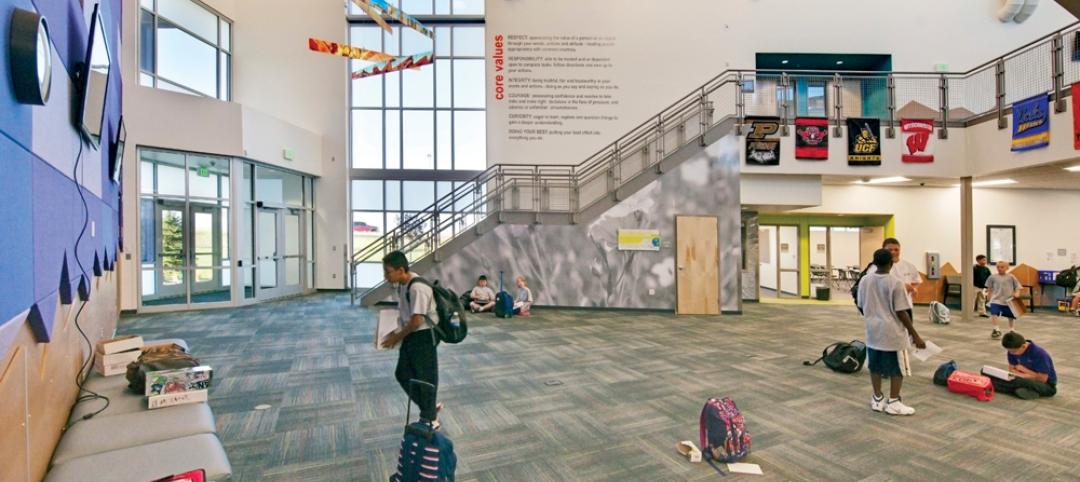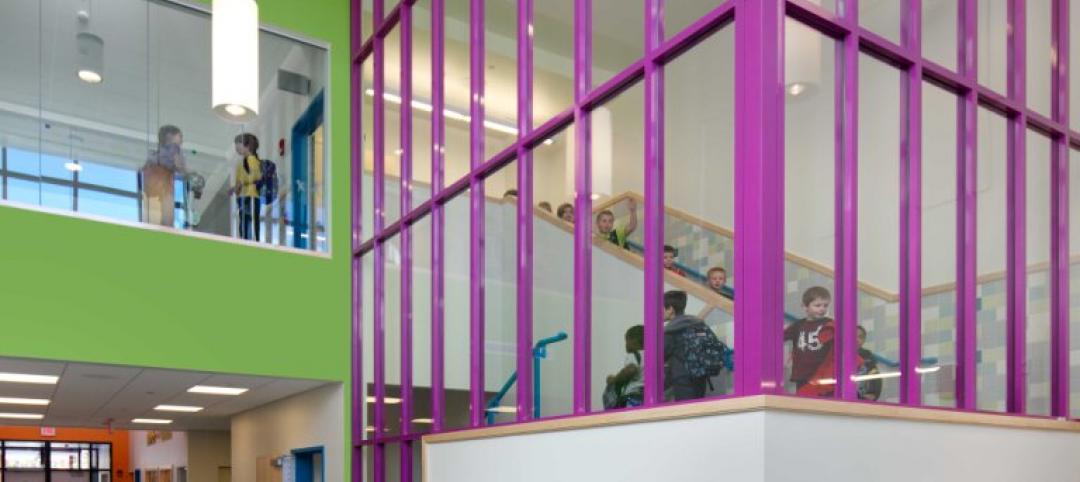As our PreK-12 clients plan for the fall 2020 semester, HMC is offering this Campus Reboot Guide to support flexible planning for re-opening, with easy-to-use tools that can be customized for schools and districts.
As part of HMC’s ongoing research effort to better understand the long-term effects of COVID-19 and develop solutions for a safe return to PreK-12 schools, we consulted with clients from various school districts and county offices of education, conducted surveys with parents, and did a deep dive literature review on building design and infectious disease transmission/prevention.
“The aim is not just to facilitate short-term COVID-19 solutions,” said President and CEO Brian Staton. “But to reinforce our momentum towards safe, resilient learning environments that enhance student success, wellness, and community well beyond this current crisis.”
Given the constantly changing conditions of the COVID-19 pandemic, evolving knowledge about the disease, and shifting directives from governmental agencies, it’s HMC’s hope that this guide offers some clarity for educators and parents of school children.
Please download HMC’s Campus Reboot Guide here: https://hmcarchitects.
In addition to the Campus Reboot Guide, HMC is committed to sharing all of its research findings with the industry in a series of white papers that focus on five main areas of Technology, Adaptability and Flexibility, Regulatory/Budgetary/
Our white papers can be downloaded here: https://hmcarchitects.
Related Stories
| Oct 26, 2014
Study asks: Do green schools improve student performance?
A study by DLR Group and Colorado State University attempts to quantify the student performance benefits of green schools.
| Oct 21, 2014
Check out BD+C's GreenZone Environment Education Classroom debuting this week at Greenbuild
At the conclusion of the show, the modular classroom structure will be moved to a permanent location in New Orleans' Lower 9th Ward, where it will serve as a community center and K-12 classroom.
| Oct 16, 2014
Perkins+Will white paper examines alternatives to flame retardant building materials
The white paper includes a list of 193 flame retardants, including 29 discovered in building and household products, 50 found in the indoor environment, and 33 in human blood, milk, and tissues.
Sponsored | | Oct 16, 2014
Mill Brook Elementary School colors outside the lines with creative fire-rated framing solution
Among the building elements contributing to the success of the elementary school’s public learning areas is a fire-rated stairwell that supports the school’s vision for collaboration. HMFH Architects designed the stairwell to be bright and open, reflecting the playful energy of students. SPONSORED CONTENT
| Oct 15, 2014
Harvard launches ‘design-centric’ center for green buildings and cities
The impetus behind Harvard's Center for Green Buildings and Cities is what the design school’s dean, Mohsen Mostafavi, describes as a “rapidly urbanizing global economy,” in which cities are building new structures “on a massive scale.”
| Oct 12, 2014
AIA 2030 commitment: Five years on, are we any closer to net-zero?
This year marks the fifth anniversary of the American Institute of Architects’ effort to have architecture firms voluntarily pledge net-zero energy design for all their buildings by 2030.
| Oct 9, 2014
Regulations, demand will accelerate revenue from zero energy buildings, according to study
A new study by Navigant Research projects that public- and private-sector efforts to lower the carbon footprint of new and renovated commercial and residential structures will boost the annual revenue generated by commercial and residential zero energy buildings over the next 20 years by 122.5%, to $1.4 trillion.
| Sep 29, 2014
Living Building vs. LEED Platinum: Comparing the first costs and savings
Skanska USA's Steve Clem breaks down the costs and benefits of various ultra-green building standards and practices.
| Sep 24, 2014
Architecture billings see continued strength, led by institutional sector
On the heels of recording its strongest pace of growth since 2007, there continues to be an increasing level of demand for design services signaled in the latest Architecture Billings Index.
| Sep 22, 2014
4 keys to effective post-occupancy evaluations
Perkins+Will's Janice Barnes covers the four steps that designers should take to create POEs that provide design direction and measure design effectiveness.
















